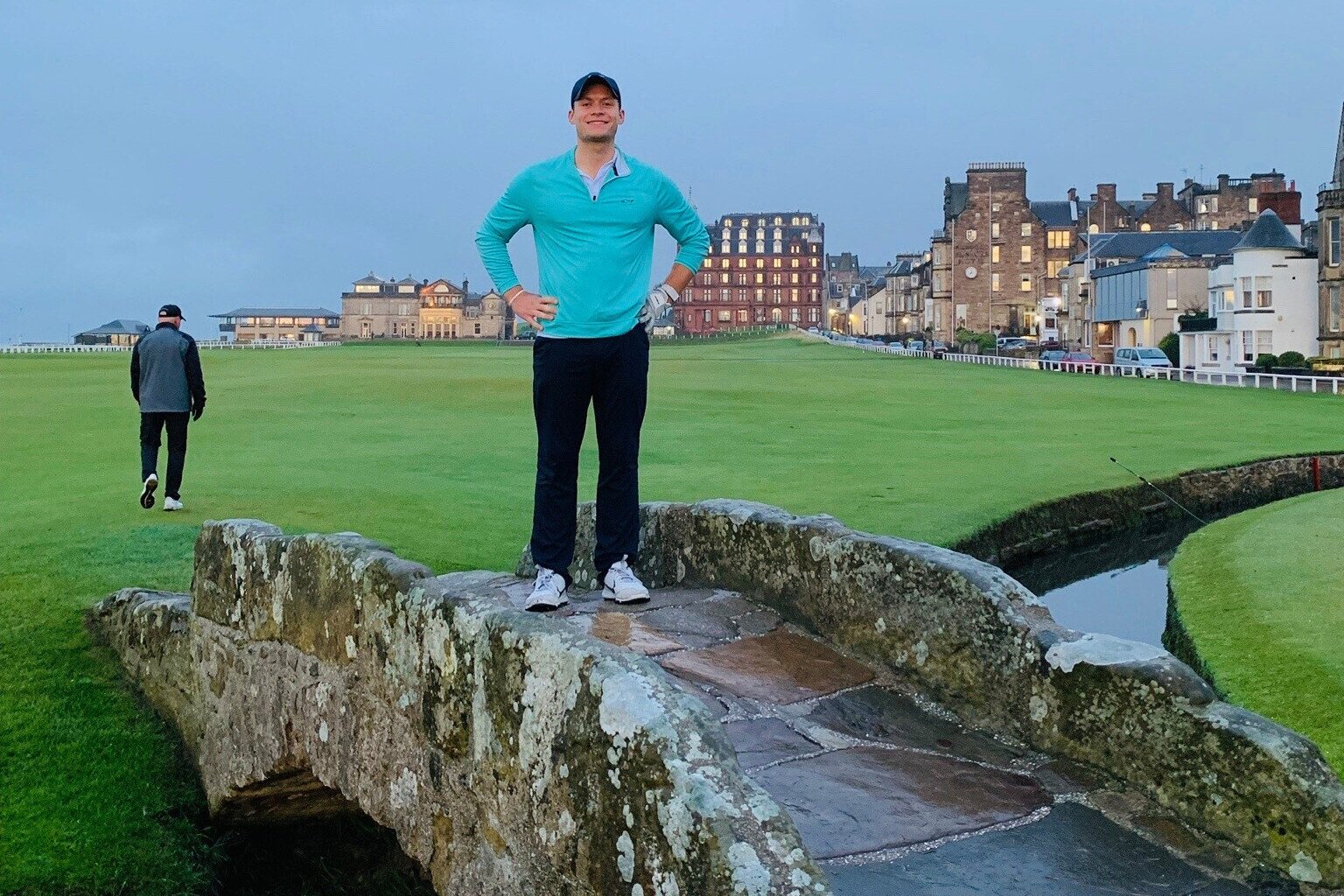The “Short and Sweet” of Golf and Sustainability
A review of Paul Jansen’s Golf: Sustainable by Design
The essence of golf is not competition, but discovery – of a variety of shots, landscapes, lies, emotions, and memories. This is the central theme of golf architect Paul Jansen’s book, Golf: Sustainable by Design.
The golfer’s experience supersedes the round itself. The experience begins the moment a golfer plans a round and then continues into the formation and sharing of fond memories many years later. This appears particularly true of the golf courses built to have what Jansen calls a “sense of place”. Courses like the Old Course at St. Andrews in Scotland are built with such defining characteristics and in a manner so seamless to the surrounding land that they appear as if crops grown from the earth.
The best golf courses nourish endless hours of human enjoyment. From the moment a round is conceived to decades after it is directly experienced, a great golf experience leaves a wake of enjoyment that can last a lifetime. So far this has proven to be the case with my own personal experience of playing the Old Course last summer, which wouldn’t have happened without Paul Jansen.
Me, rain-soaked on the Swilcan Bridge at around 9PM local time on August 22, 2019. Didn’t think to bring rain gear to Scotland! Just after that photo, I birdied 18 en route to a 77. Golf being the game that it is, I’ve only broken 80 once since that day ;).
Discovery has been the theme of my own journey to reconcile passions of golf and sustainability, which began in late 2018 / early 2019. Upon learning about regenerative agriculture in a Master’s in Sustainable Business program, I simply googled “regenerative golf”, and sure enough, someone in golf was thinking beyond “less bad”.
That someone was Paul Jansen. We spoke over the phone about his design methodology, and shortly after our conversation, he offered a virtual introduction to Sam Thomas of the GEO Foundation, who I met in person during my memorable summer trip to Scotland. Three months later I’d interview for a position at my current employer, the National Golf Foundation, in the office of CEO Joe Beditz, who I told stories of my trip to Scotland in front of his mural painting of the 18th hole at the Old Course (where Joe remains a proud member of many years).
Jansen describes great golf design almost as one would describe a great golf swing:
Less manipulation -- and more simplicity -- generally produces better results. And if the goal of golf design is creating variety, then following nature is perhaps one’s safest bet. Natural design will ultimately lead to fewer inputs, more character, and thus, a better journey for the golfer. Like many amateur golfers that add compensatory movements in vain attempts to gain control of the swing, architects can risk getting in their own way by adding unnecessary elements like out of play bunkers or non-native grasses. While such features may add visual appeal they also introduce higher costs that affect superintendent’s budgets while putting undue stress on the natural environment.
Yet, Paul notes that the “sustainability” of golf (that is, whether or not it survives over the long-run) is as much about keeping the sport fresh, adaptable, and enjoyable as it is about any loftier goal of healing the planet (or even just minimizing our impacts on it). The fundamental key to Jansen’s design methodology is not his forward thinking around eco-regeneration, but more simply, his empathy for the user experience.
Empathy is the first principle of good design, according to Tim Brown of renowned design firm IDEO. With more media and options to compete for limited attention, the golfer’s availability to play has shrunk far below the allotment of a four hour golfing journey (a typical round). Golf must therefore meet the customer halfway through smaller courses with lower impact, but also reduced rates and time commitment.
Contrary to the trend of increasing distance, the golf courses of tomorrow must be “short and sweet” as Paul Jansen puts it… and sometimes literally sweet, as he has grown mangos and pineapples on his courses in the past. A great golf experience starts with great design and that starts when we collaborate with nature: the oldest and wisest of golf course designers.

